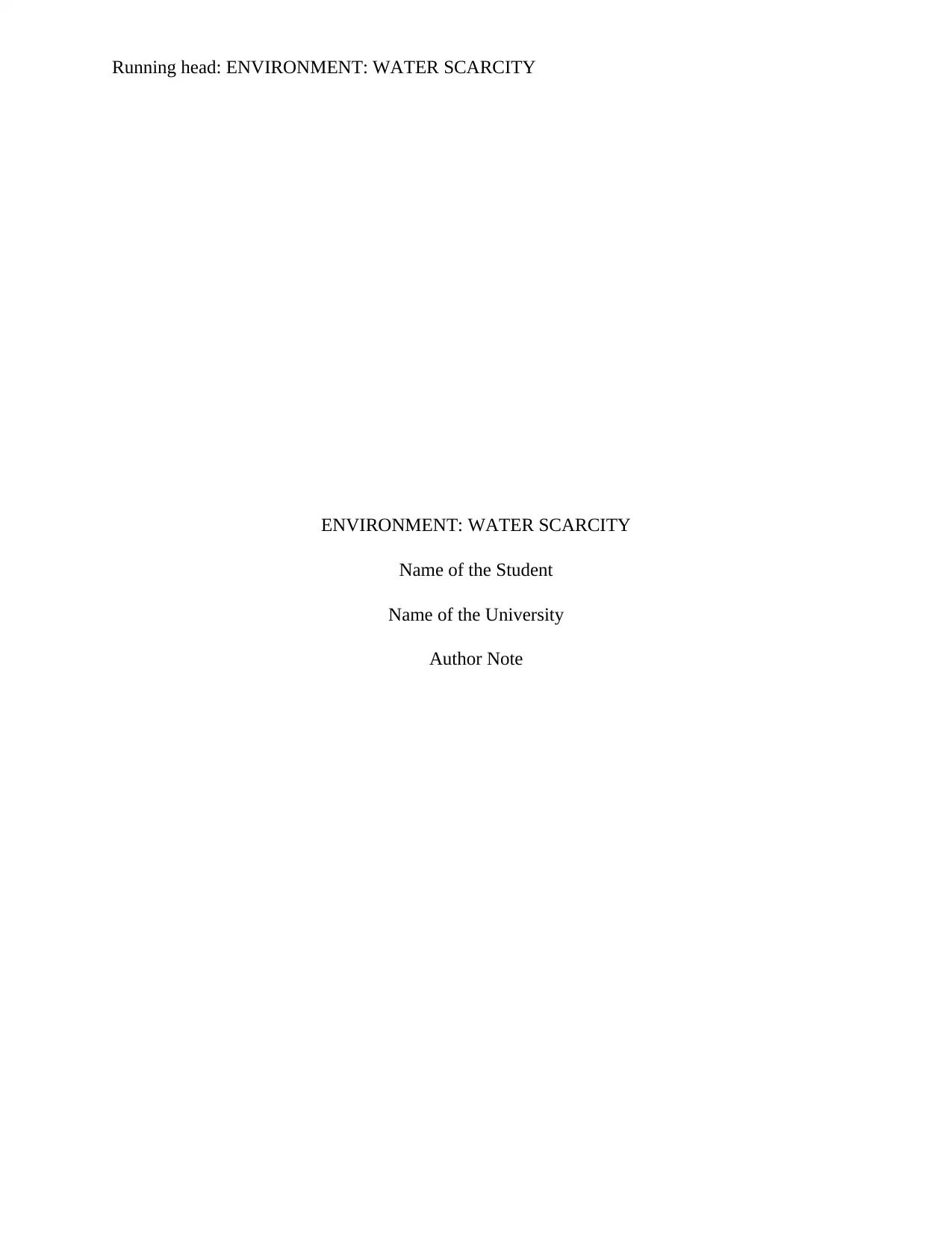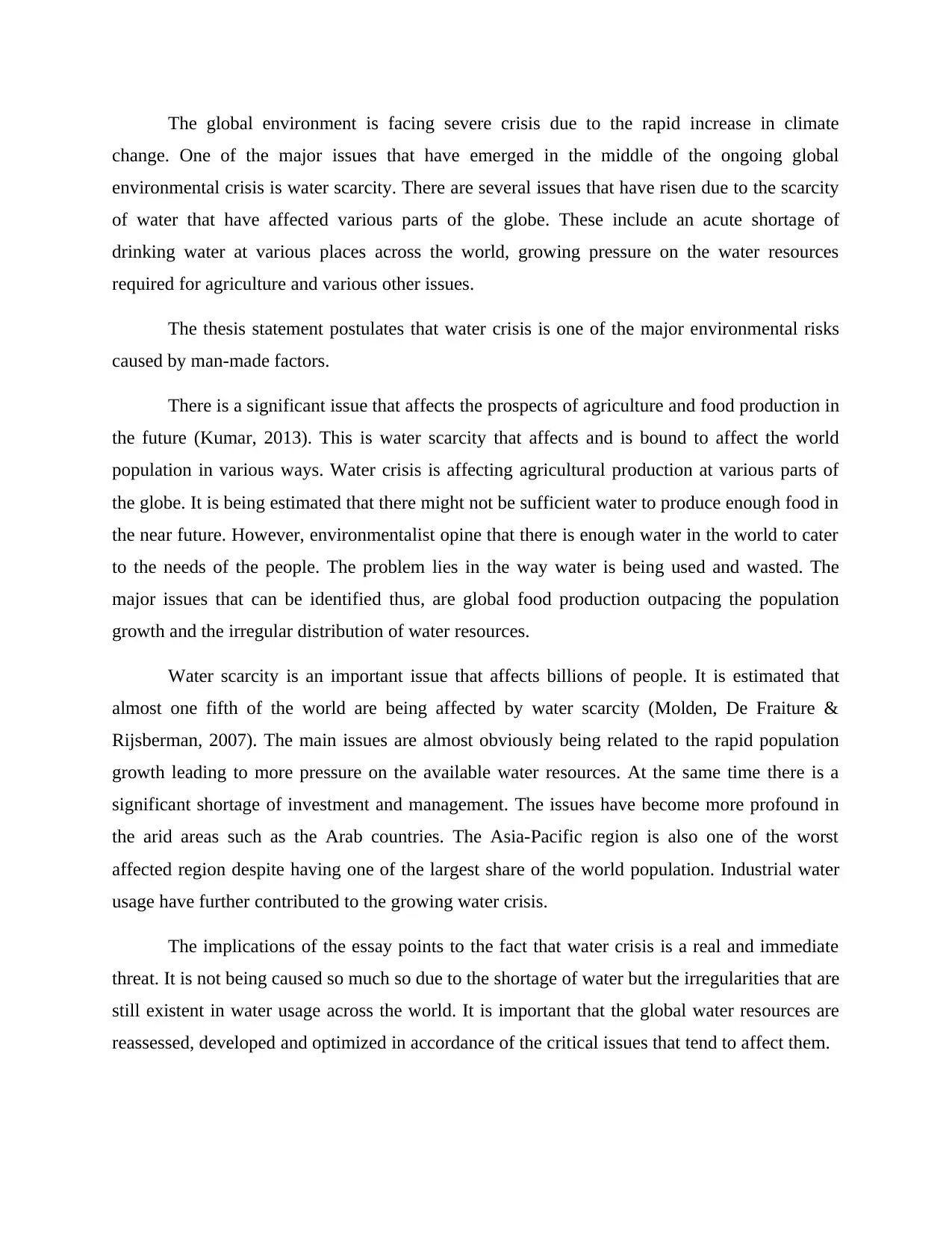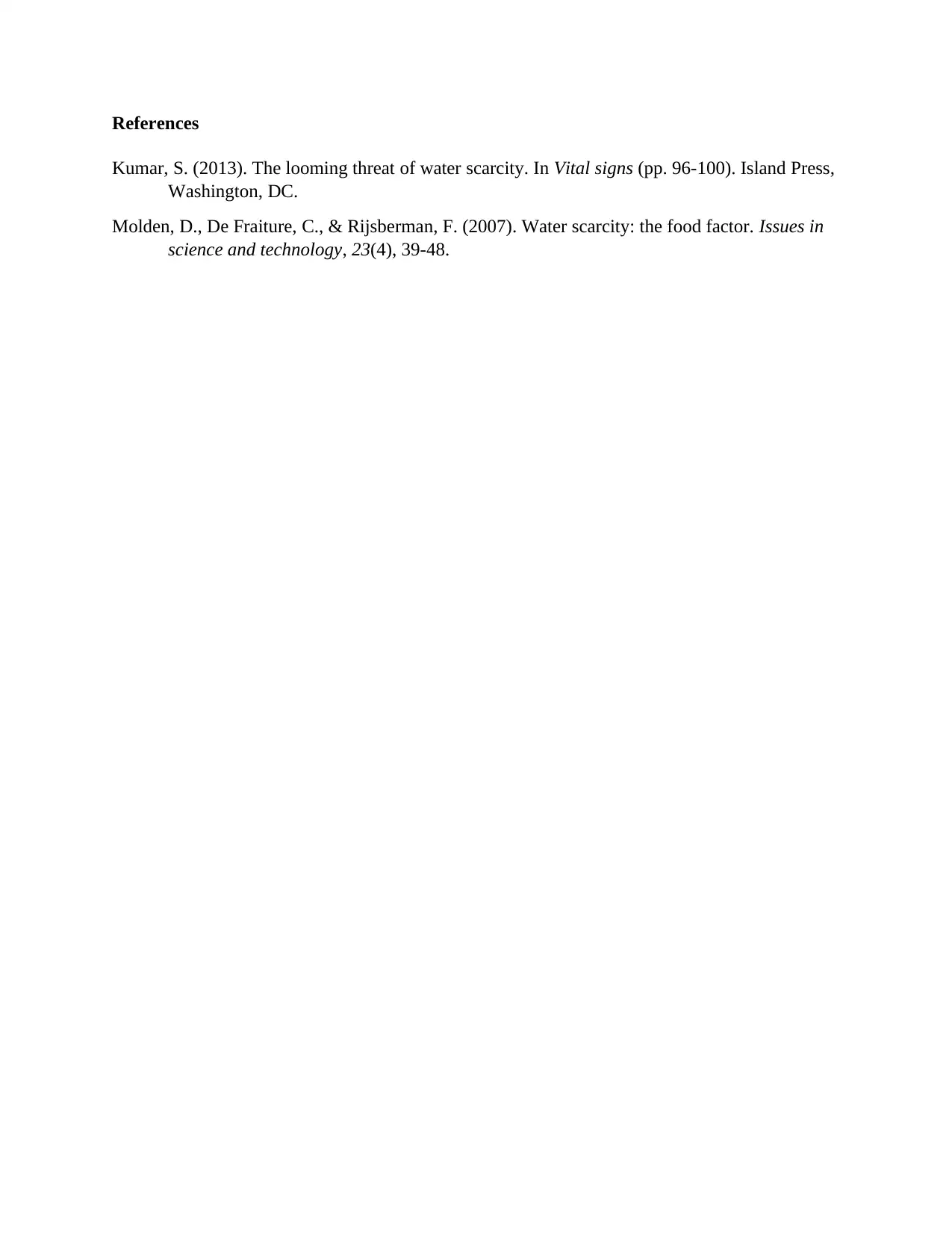Environmental Science Essay: Water Scarcity and Global Impacts
VerifiedAdded on 2022/08/18
|3
|529
|14
Essay
AI Summary
This essay examines water scarcity as a significant environmental risk, emphasizing its connection to climate change and its impact on global food production. The author argues that water scarcity is a major crisis, exacerbated by man-made factors such as global food production outpacing population growth and the irregular distribution of water resources. The essay highlights the effects of water scarcity on agriculture, the pressure on water resources, and the need for reassessment, development, and optimization of global water resources. It references studies indicating that a substantial portion of the world's population is affected by water scarcity, particularly in arid regions and the Asia-Pacific region, and addresses the role of industrial water usage. The essay concludes that the water crisis is a real and immediate threat, driven not just by a shortage of water but also by inefficiencies in water usage, and calls for effective management and investment to mitigate its effects.
1 out of 3










![[object Object]](/_next/static/media/star-bottom.7253800d.svg)